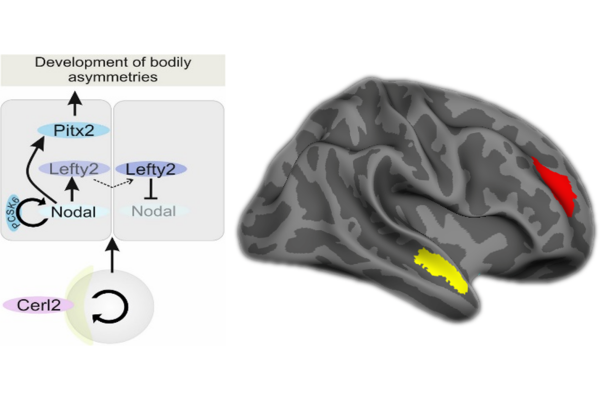2019-05-21

From the outside, the human body seems symmetrical. On the inside however, organs are arranged asymmetrically - the heart for example has its seat on the left side in most cases. The development of bodily asymmetries is influenced by the nodal cascade. Here, the gene PCSK6 has shown regulatory function during left-right axis formation by initiating symmetry breakage. However, it is not clear if variation in this gene is also associated with structural asymmetries in the brain. To examine the impact of PCSK6, biopsychologists from the Ruhr-University Bochum analyzed the effects of genetic variation in PCSK6 in a cohort of 320 healthy adults. They linked different PCSK6 variants to the asymmetry in the superior temporal sulcus, a structure involved in voice perception. Heterozygous individuals who carry a short and a long PCSK6 allele showed stronger rightward asymmetry. Further associations were evident in the dorsolateral prefrontal cortex. Here, individuals homozygous for short alleles showed a more pronounced asymmetry. This indicates that PCSK6, a gene that has been implicated in the ontogenesis of bodily asymmetries by regulating the nodal cascade, is also relevant for structural asymmetries in the human brain.

From the outside, the human body seems symmetrical. On the inside however, organs are arranged asymmetrically - the heart for example has its seat on the left side in most cases. The development of bodily asymmetries is influenced by the nodal cascade. Here, the gene PCSK6 has shown regulatory function during left-right axis formation by initiating symmetry breakage. However, it is not clear if variation in this gene is also associated with structural asymmetries in the brain. To examine the impact of PCSK6, biopsychologists from the Ruhr-University Bochum analyzed the effects of genetic variation in PCSK6 in a cohort of 320 healthy adults. They linked different PCSK6 variants to the asymmetry in the superior temporal sulcus, a structure involved in voice perception. Heterozygous individuals who carry a short and a long PCSK6 allele showed stronger rightward asymmetry. Further associations were evident in the dorsolateral prefrontal cortex. Here, individuals homozygous for short alleles showed a more pronounced asymmetry. This indicates that PCSK6, a gene that has been implicated in the ontogenesis of bodily asymmetries by regulating the nodal cascade, is also relevant for structural asymmetries in the human brain.